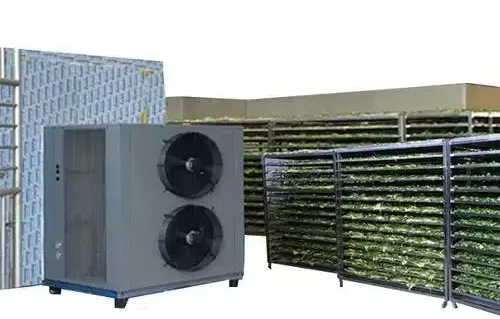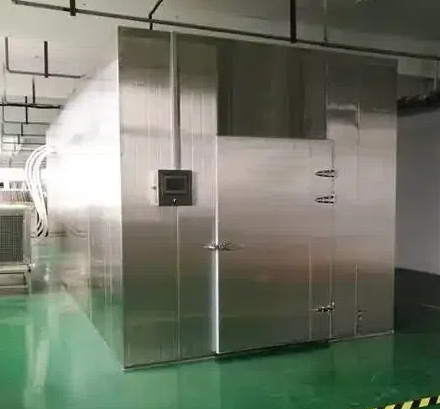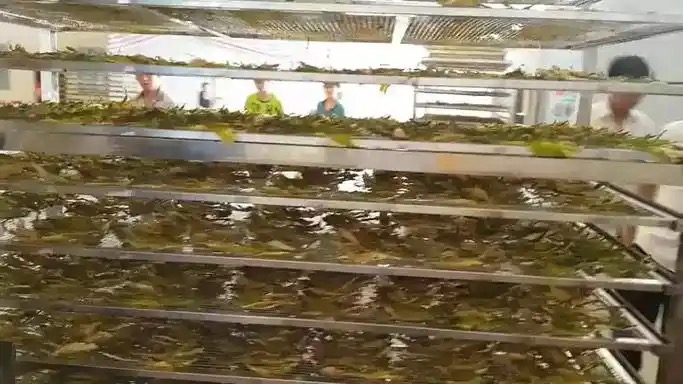
Content Menu
● Understanding the Basics
>> What is a Condensing Dryer?
>> What is a Heat Pump Dryer?
● Key Considerations When Choosing a Dryer
>> 1. Energy Efficiency
>> 2. Drying Temperature
>> 3. Moisture Removal Efficiency
>> 4. Initial Investment and Operating Costs
>> 5. Maintenance Requirements
>> 6. Space and Installation Requirements
>> 7. Product Quality and Preservation
>> 8. Versatility and Application
>> 9. Environmental Impact
>> 10. Regulatory Compliance
● Conclusion
● Frequently Asked Questions
>> 1. What is the main difference between a condensing dryer and a heat pump dryer?
>> 2. Which dryer is more energy-efficient?
>> 3. Can heat pump dryers preserve the quality of food better than condensing dryers?
>> 4. What are the maintenance requirements for each type of dryer?
>> 5. Are there specific food products that are better suited for heat pump dryers?
When it comes to food drying, the choice of equipment can significantly impact the quality, efficiency, and cost-effectiveness of the drying process. Two popular types of dryers used in the food industry are condensing dryers and heat pump dryers. Each has its unique features, advantages, and disadvantages. This article will explore the key considerations when choosing between these two types of dryers, particularly for food drying applications.

Understanding the Basics
What is a Condensing Dryer?
A condensing dryer operates by heating air and passing it through the food product. The warm air absorbs moisture from the food, and then the moist air is cooled in a condenser, where the moisture is collected as water. This type of dryer is often used in various industries, including food processing, because it can effectively remove moisture without the need for external venting.
What is a Heat Pump Dryer?
A heat pump dryer, on the other hand, uses a refrigeration cycle to dry food. It works by extracting moisture from the air inside the dryer and recycling the warm air back into the drying chamber. This method is highly energy-efficient, as it uses less energy compared to traditional drying methods. Heat pump dryers are particularly beneficial for drying sensitive food products that require lower temperatures to maintain their quality.
Key Considerations When Choosing a Dryer
1. Energy Efficiency
One of the most critical factors to consider is energy efficiency. Heat pump dryers are known for their low energy consumption. They can operate at lower temperatures, which not only saves energy but also helps preserve the nutritional quality of the food being dried. In contrast, condensing dryers typically consume more energy due to their higher operating temperatures.
For businesses looking to reduce their carbon footprint and operational costs, investing in a heat pump dryer can lead to significant savings over time. The energy savings can be particularly beneficial for large-scale operations where dryers are in constant use.

2. Drying Temperature
The drying temperature is crucial, especially for food products that are sensitive to heat. Heat pump dryers operate at lower temperatures, making them ideal for drying fruits, vegetables, and herbs without compromising their flavor and nutritional value. Condensing dryers, while effective, may not be suitable for all food types due to their higher drying temperatures.
For example, delicate herbs can lose their essential oils and flavors if dried at high temperatures. Therefore, choosing a dryer that allows for precise temperature control is essential for maintaining product quality.
3. Moisture Removal Efficiency
Both types of dryers are effective in removing moisture, but their methods differ. Condensing dryers can quickly remove moisture from food, making them suitable for larger batches. However, heat pump dryers excel in moisture removal efficiency over extended periods, making them ideal for continuous drying processes.
In applications where consistent moisture levels are critical, heat pump dryers can provide a more reliable solution. Their ability to maintain lower temperatures while effectively removing moisture can lead to better product consistency.
4. Initial Investment and Operating Costs
The initial cost of purchasing a dryer can vary significantly between condensing and heat pump models. Heat pump dryers tend to have a higher upfront cost but can lead to lower operating costs due to their energy efficiency. It’s essential to consider the long-term savings on energy bills when evaluating the total cost of ownership.
Additionally, businesses should factor in potential maintenance costs and the lifespan of the equipment. While heat pump dryers may require a larger initial investment, their durability and lower energy consumption can make them a more economical choice in the long run.
5. Maintenance Requirements
Maintenance is another critical aspect to consider. Heat pump dryers generally require less maintenance than condensing dryers. The closed-loop system of heat pump dryers minimizes the need for regular cleaning and servicing, while condensing dryers may require more frequent maintenance to ensure optimal performance.
Regular maintenance is essential for both types of dryers to ensure they operate efficiently. However, the reduced maintenance needs of heat pump dryers can free up resources and time for businesses, allowing them to focus on other operational aspects.
6. Space and Installation Requirements
The physical space available for the dryer and the installation requirements are also important considerations. Heat pump dryers are often more compact and can be installed in smaller spaces, making them suitable for facilities with limited room. Condensing dryers may require more space for proper ventilation and operation.
For businesses operating in tight spaces, the compact design of heat pump dryers can be a significant advantage. This flexibility can allow for better utilization of available space, which is crucial in busy production environments.
7. Product Quality and Preservation
For food manufacturers, maintaining the quality of the product is paramount. Heat pump dryers are designed to preserve the integrity of food products by drying them at lower temperatures. This is particularly important for high-value products such as herbs, spices, and delicate fruits. Condensing dryers, while effective, may not provide the same level of quality preservation for sensitive items.
The ability to maintain product quality can directly impact customer satisfaction and brand reputation. Therefore, investing in a dryer that aligns with product quality goals is essential for long-term success.
8. Versatility and Application
Consider the versatility of the dryer for different food products. Heat pump dryers can handle a wide range of products, from fruits and vegetables to meats and fish. Condensing dryers are also versatile but may not be as effective for certain delicate items. Understanding the specific needs of your product line will help in making the right choice.
For businesses that process a variety of food products, a heat pump dryer’s versatility can be a significant advantage. This adaptability can streamline operations and reduce the need for multiple drying systems.
9. Environmental Impact
With increasing awareness of environmental issues, the ecological footprint of the drying process is becoming more important. Heat pump dryers are generally more environmentally friendly due to their lower energy consumption and reduced greenhouse gas emissions. Condensing dryers, while effective, may have a larger environmental impact due to their higher energy use.
Choosing equipment that aligns with sustainability goals can enhance a company’s reputation and appeal to environmentally conscious consumers. This consideration is becoming increasingly important in today’s market.
10. Regulatory Compliance
Finally, it’s essential to consider any regulatory requirements related to food processing and drying. Ensure that the chosen dryer complies with local and international food safety standards. This is particularly important for manufacturers exporting products to different countries.
Compliance with food safety regulations is critical for maintaining product integrity and avoiding costly penalties. Therefore, understanding the regulatory landscape is essential when selecting drying equipment.
Conclusion
Choosing between a condensing dryer and a heat pump dryer for food drying applications involves careful consideration of various factors, including energy efficiency, drying temperature, moisture removal efficiency, initial investment, maintenance requirements, and product quality. By understanding the unique features and benefits of each type of dryer, food manufacturers can make informed decisions that align with their operational needs and product quality goals.

Frequently Asked Questions
1. What is the main difference between a condensing dryer and a heat pump dryer?
The main difference lies in their drying methods; condensing dryers use higher temperatures to remove moisture, while heat pump dryers operate at lower temperatures and recycle warm air.
2. Which dryer is more energy-efficient?
Heat pump dryers are generally more energy-efficient, using less energy per load compared to condensing dryers.
3. Can heat pump dryers preserve the quality of food better than condensing dryers?
Yes, heat pump dryers operate at lower temperatures, which helps preserve the flavor and nutritional value of sensitive food products.
4. What are the maintenance requirements for each type of dryer?
Heat pump dryers typically require less maintenance due to their closed-loop system, while condensing dryers may need more frequent servicing.
5. Are there specific food products that are better suited for heat pump dryers?
Yes, heat pump dryers are ideal for drying delicate items such as fruits, vegetables, and herbs, which require lower drying temperatures.












